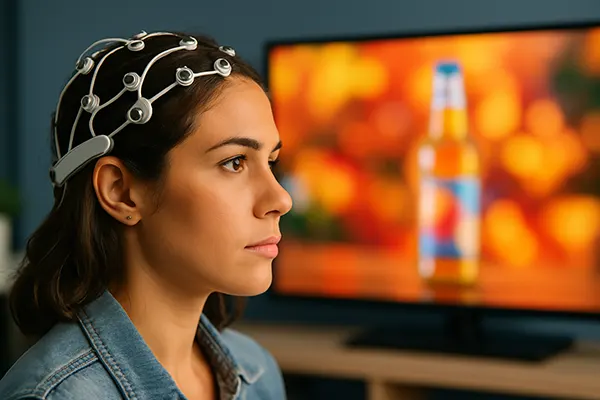
Neuromarketing: How the Brain Responds to Advertising
Neuromarketing has become one of the most fascinating areas in modern marketing research. It combines neuroscience, psychology, and consumer behaviour studies to explore how advertising influences the human brain. By examining brain activity, marketers can better understand what drives decision-making and emotional responses to different types of advertising. In 2025, neuromarketing continues to shape global marketing strategies, as companies seek more accurate insights into consumer preferences.
The Science Behind Neuromarketing
Neuromarketing is based on the idea that much of consumer behaviour is influenced by subconscious processes. Traditional surveys and focus groups can only capture conscious opinions, while brain imaging techniques such as fMRI and EEG allow researchers to see what truly resonates with people. This scientific approach helps to identify emotions, memory recall, and even stress levels triggered by advertisements.
Brain scans can reveal which visual elements – colours, shapes, or faces – attract attention and stay longer in memory. For example, studies show that emotional storytelling in commercials often activates areas of the brain linked to empathy and social bonding, making such campaigns more memorable. These insights are particularly valuable for advertisers in highly competitive markets.
In 2025, neuromarketing technologies are becoming more accessible, allowing even mid-sized businesses to benefit from advanced consumer research. With the help of artificial intelligence, data from brain activity can now be processed faster and with greater accuracy, making neuromarketing a practical tool rather than a niche luxury.
Applications in Advertising
Neuromarketing techniques are widely used to test advertisements before they reach the public. Companies can identify which scenes create the strongest emotional reactions and which moments lose viewers’ attention. By doing so, businesses reduce the risk of investing in campaigns that fail to connect with audiences.
One common application is measuring pupil dilation and facial expressions, which provide real-time feedback on how viewers respond to an advert. Another is tracking eye movements to see which parts of a screen or printed advert capture attention first. This helps brands optimise placement of logos, slogans, and key messages.
Brands across industries, from consumer electronics to healthcare, increasingly rely on neuromarketing data. For example, pharmaceutical companies may use it to test whether medical information is presented clearly enough, while food producers apply it to study cravings triggered by packaging design.
The Role of Emotions in Consumer Decisions
Research has shown that emotions play a central role in decision-making, often outweighing rational thought. Advertisements that trigger happiness, nostalgia, or even mild anxiety can lead to stronger engagement and higher purchase intent. Neuromarketing allows researchers to measure these emotional triggers and evaluate their strength.
Emotional branding has become a major focus in recent years. By building a positive emotional association with a brand, companies increase loyalty and long-term customer relationships. Neuromarketing helps identify the exact emotional triggers that make people feel connected to a brand on a subconscious level.
In practice, this means that a commercial showing family gatherings may stimulate areas of the brain linked to safety and belonging. Similarly, ads using humour can activate reward centres, making viewers more likely to remember and talk about the brand. These subtle effects often decide which companies stand out in crowded markets.
Case Studies of Emotional Marketing
Global brands like Coca-Cola, Apple, and Nike have invested heavily in emotional advertising campaigns supported by neuromarketing research. Their commercials often rely less on direct product promotion and more on creating a story that viewers relate to on a personal level.
For instance, Nike’s campaigns frequently activate motivational responses in the brain, encouraging consumers to associate the brand with self-improvement and achievement. Coca-Cola, on the other hand, uses nostalgia and shared experiences to strengthen social connections between its brand and consumers.
Neuromarketing ensures that these strategies are not based on guesswork but on measurable neurological responses. By identifying what truly engages audiences, companies can create advertising that resonates across cultures and age groups.

Future Prospects of Neuromarketing
As technology advances, neuromarketing is expected to become even more integrated into everyday business practices. Wearable devices, such as smart glasses and brainwave sensors, are making it easier to gather data outside of laboratory environments. This means researchers can study consumer reactions in real-life situations, such as shopping or browsing online.
Privacy remains an important issue. While neuromarketing offers valuable insights, ethical guidelines are essential to ensure that consumer rights are respected. Transparency and voluntary participation are central to maintaining trust between businesses and their audiences.
Looking ahead, neuromarketing will likely play a key role in personalising advertising experiences. With AI-driven analysis, brands can adjust campaigns in real time based on viewers’ reactions, creating marketing that feels more relevant and less intrusive. This marks a significant shift towards consumer-centred strategies in the global marketplace.
Ethical and Societal Implications
Despite its benefits, neuromarketing raises questions about how far businesses should go in influencing subconscious decision-making. Critics argue that manipulating emotions without consumers’ awareness could be ethically problematic. Therefore, the industry must balance innovation with responsibility.
Regulatory bodies are beginning to consider guidelines for neuromarketing research, ensuring that studies respect personal data and mental privacy. Companies that adopt transparent practices are more likely to build long-term trust with their customers.
Society also benefits when neuromarketing is used for positive purposes, such as improving public health campaigns or encouraging environmentally friendly behaviour. These applications demonstrate that neuromarketing can be a tool not only for profit but also for social good.
